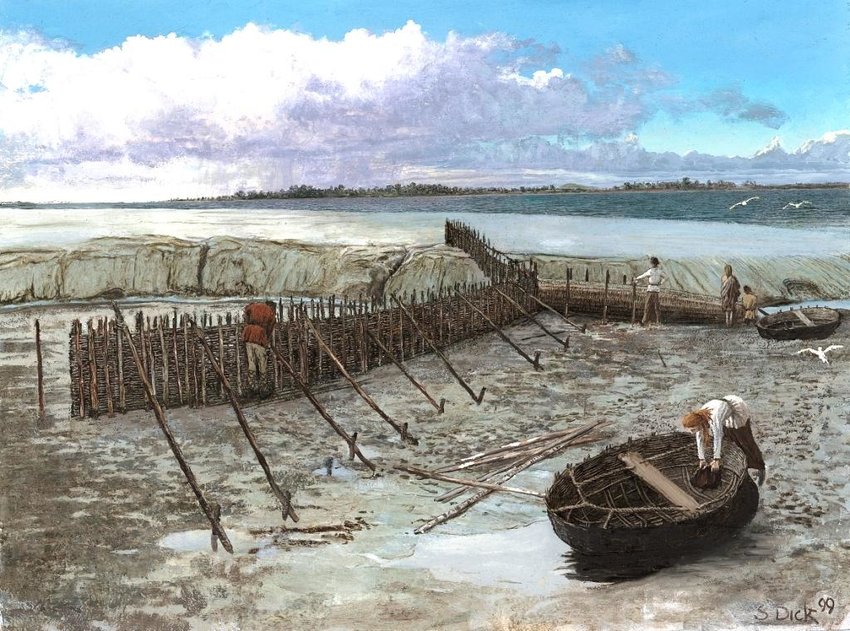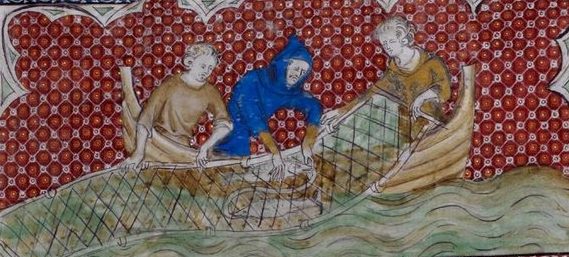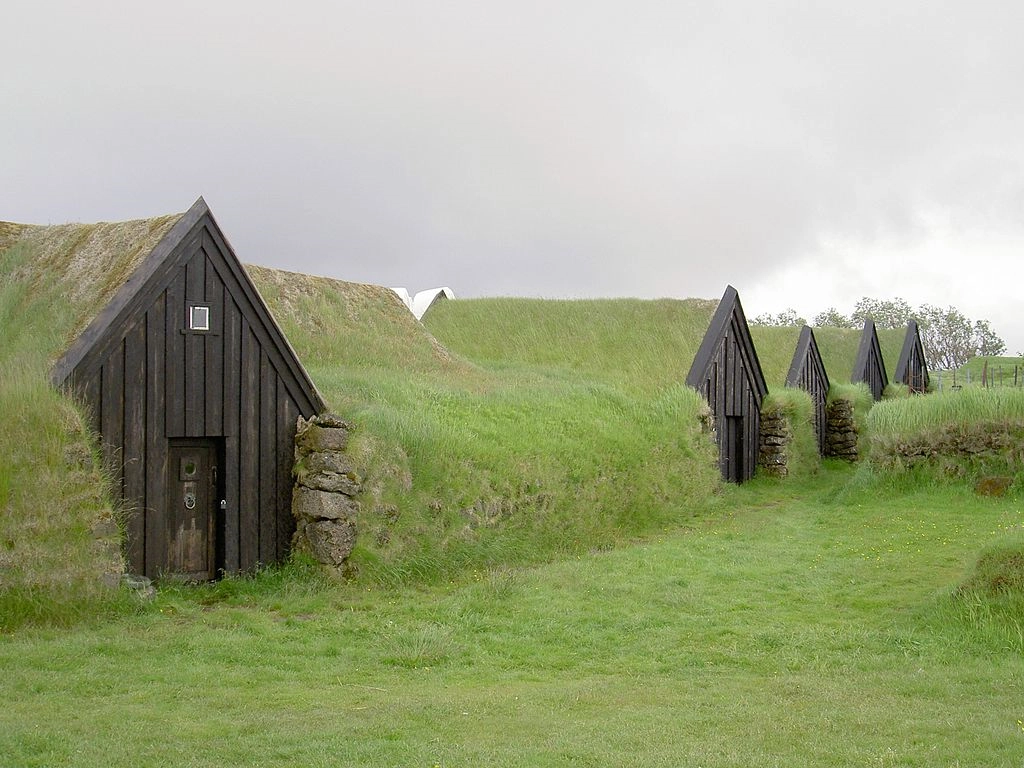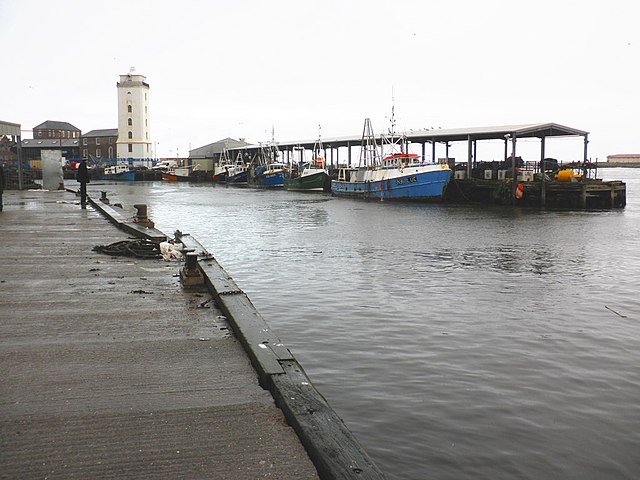The priors of Tynemouth were not just pious clergymen, they were also almost like pirate kings and powerful overlords of the area. They spent much of their effort in securing revenue so they could live in the wealth they were accustomed to. So it was an obvious development that ways would be found to utilise and profit from the natural harbour where the Pow Burn meets the Tyne.
It was nearly 800 years ago, in 1225, that the Prior Germanus had three turf shields built on the sandy spit of land that is now Clifford’s Fort next to the Low Light. He also had a wharf erected on the west side of the Pow Burn, where the Irvin Building is now, and moved a small fleet of boats there. There was a salt marsh behind this land, at the bottom of Tanners Bank, which the Prior had drained. There were also plenty of coal deposits nearby that could now be shipped from here. Both the salt and the coal were owned by the Prior, but the official purpose of his industry was to house a fishing fleet that could supply the Priory and sell any surplus.

Ten years later, a row of shields rose up on the south side of the river with its own fledgling fishing fleet, and ten years after that, the Prior of Durham officially consented to a town charter for this settlement. It was from these sparks of secular enterprise that the two towns grew in tandem.

The early shield huts must have been basic and temporary, almost like a row of lean-to’s initially, protecting dwellers from an easterly wind, with a bit of stone walling to enclose a single room. You can see examples of fishermen’s shields in Scotland, but these are more robust, modern bothies, whereas the turf shields I imagine would have been more like the ‘turfbaers’ that people traditionally lived in in Iceland.

Building these simple lodges, essentially dugouts with sod roofs, was probably the most the Prior could get away with. A row of houses with a street, a boat yard, a bakehouse and a brewery, would represent the beginnings of an unincorporated town, which would bring the ire and indictment of the Newcastle merchants. After a few years though, it was futile to stop the settlement at North Shields expanding along to Union Road and up the Brewery Bank, making it into a real town.
There’s a remarkable story from this early time that has survived down the annals of folklore. When the population numbered around a thousand people living in around 200 houses, a fleet of six boats sailed as far as Iceland, by way of the Faroe Islands, and made it back in once piece. I would imagine this trip was repeated in the following summers.

Shields’ Growth Stifled
The inherent opposition from Newcastle put a cap on the extent to which the two Shields could flourish. In 1258, Newcastle banned the docking of any ships at South Shields. Nine years later, the keelmen of Newcastle set alight to North Shields, burned down the mill and confiscated the coal that was lying in harbour. These attacks and bitter recriminations were a constant theme for the next four hundred years, with the royally-backed Newcastle usually asserting its power. This enmity was famously detailed by North Shields brewer and merchant, Ralph Gardner, in England’s Grievance with the Coal Trade, a petition to Oliver Cromwell to curb Newcastle’s oppression.
So the fact that North Shields was always stifled by its up-river neighbour has meant that to this day it has remained true to what founded it, fishing. The fishing industry, though, is by its nature, permanently vulnerable to economics and the powers that be. Some things don’t change! Which is why in North Shields, it should always be protected and celebrated. If there’s one lesson from the history of Shields, it’s that if the fishing is thriving, the whole town benefits.
References
The Origin of North Shields and its Growth – William Garson (1926)
South Tyneside Council Archaeological Strategy (2004)
Photo credits: Roger Cornfoot – The Gut. Chris73/WikimediaCommons. British Library, Royal Mss. 2 B VII, folio 73. painting by Simon Dick, reproduced courtesy of University College Dublin





Interesting thoughts, thanks.
I’d suggest that perhaps the first stage would have been less formal. It’s almost certain that a level of part time fishing would have taken place from the mouth of the burn going way back to Saxon or Iron Age times. It’s likely that rough and ready shelters would have gone up, initially to protect gear and provide some shelter for the fishermen in bad weather. and that in time these became sheilings, which were a step up as they allowed people to live there seasonally. I really don’t think the first sheilings were put up by the priory, but they were probably formalised when their money making potential was realised.
Two things really interesting me here.
Firstly, accepting that small scale fishing had almost certainly gone on from long before Newcastle had the power to do anything about it, did it continue uninterrupted (I think so), until Newcastle thought it was becoming more of a threat. Maybe the boats were getting bigger, maybe Newcastle was worried about what it might develop into, rather than what it was, or maybe it just became another stick to beat the priory with?
Secondly, the people. Where did they come from? Initially, I think it’s almost certain that they were the local agricultural tenants who did a bit of fishing when they had the opportunity, managed to get hold of some small boats, and fished in the estuary when the herring or mackerel were ‘in’. But when sheilings came into play, this assumes people lived here seasonally, presumably in the summer, so where did they come from, and more importantly, where did they go in winter and what did they live on?
I think there are two possible scenarios..
a. They were members of the families of tenants within the manor, just saving themselves the walk home every day while they were busy with the hectic catching and preserving of the ‘harvest’ – this is a similar scenario to the use of sheilings in upland areas.
b. The priory expanded the fishing, in order to supply their own needs, and brought in seasonal workers? In some ways this looks very plausible, but where did these people come from and how did they live in the winter?
It could well have been a bit of both?
Cheers,
Dave
Thanks Dave. This all makes sense. I’m really just giving a slightly new take on the standard narrative that it was the enterprise of the Prior Germanus. What I do think though, is that he was more interested in the money to be made from coal, salt and other goods and perhaps the fishing was a smokescreen for this. I don’t think Newcastle was concerned about the fishing, or to be more precise, small scale fishing. This is a quote from the South Tyneside Council Archaeological Strategy:
“In 1256 the Prior of Durham was indicted for “founding a large vill in the
port of the Tyne with 27 houses, two ovens and four breweries ….and fish was sold
wholesale” (Hodgson, 1903, p 40-41). The Prior of Durham was also accused
along with the Prior of Tynemouth in relation to North Shields in 1279 for having
built a town “where no town ought to be, except lodges only where fishermen
should abide.” (Hodgson, 1903, p 41)”